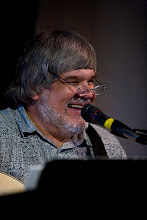A fateful day. The Beatles and Neil Aspinall shoehorn themselves and their equipment into a rented van for a projected six hour drive down to London. They are scheduled to do a recording test tomorrow, New Years day, at Decca's studio in West Hampstead. New manager Brian Epstein has pulled all the strings and levers he knows to get it for them. The plans didn't allow for a blizzard of historic proportions that results in some ten hours of nervous driving before their arrival at their hotel. Brian has booked them into the Royal Hotel in Woburn Place. No more dossing down in damp basements and glorified broom closets. Brian will see to that.
Yet another minor coincidence. Look at the Google Earth satellite view for the Royal National Hotel, Woburn Place. A jet liner?! You don't see that very often in GE.
1961 in Review
Whew! What a ride it's been this year. At the beginning of 1961, it was not a sure thing that the end of that year would see the Beatles still making music together. Longtime followers of this blog will remember, one year ago, the band was sent home from Germany with its tail between its legs after it was discovered that George was underage and after Bruno Koschmider made a mountain out of a burning condom molehill. After their return home, it seems they couldn't even face each other for a while and a slightly different turn of events could have prevented them from re-forming at all.
But, as always where the Beatles are concerned, fate stepped in to lend a hand. The very much improved band was welcomed back enthusiastically by the Liverpool kids and so they regained their drive and equilibrium. Another grueling stint in Hamburg at the Top Ten Club further honed the blade that will soon make mincemeat out of the popular music world. Stuart Sutcliffe, a very key influence on the early Beatles style-wise if not musically, has stayed in Germany and keeps in touch with the band, and especially his best friend John, via post.
Of course, up till now, Germany has been a major contributor to the development of the band, and it will continue to play a role, but their center has definitely shifted back to Liverpool and specifically the legendary Cavern Club. The local music scene, helped along in no small measure by our unsung hero Sam Leach and others, is burgeoning. A minor recording has brought them to the attention of a local businessman. He has the all important "public school manners" and can open doors for them that they would never be allowed otherwise to enter. (Note: British public schools = US private schools)
There are disappointments yet to suffer and many good times to be had as well before the story is told. Happy New Year, fans and friends. See you in 1962.
P.S. Hey, it's a holiday. You've got some time to kill, right. Here's an hour long interview with Sam Leach where he talks about the early days in Liverpool that will soon be coming to an end. One of the best Beatles early history documents I've ever found.





























